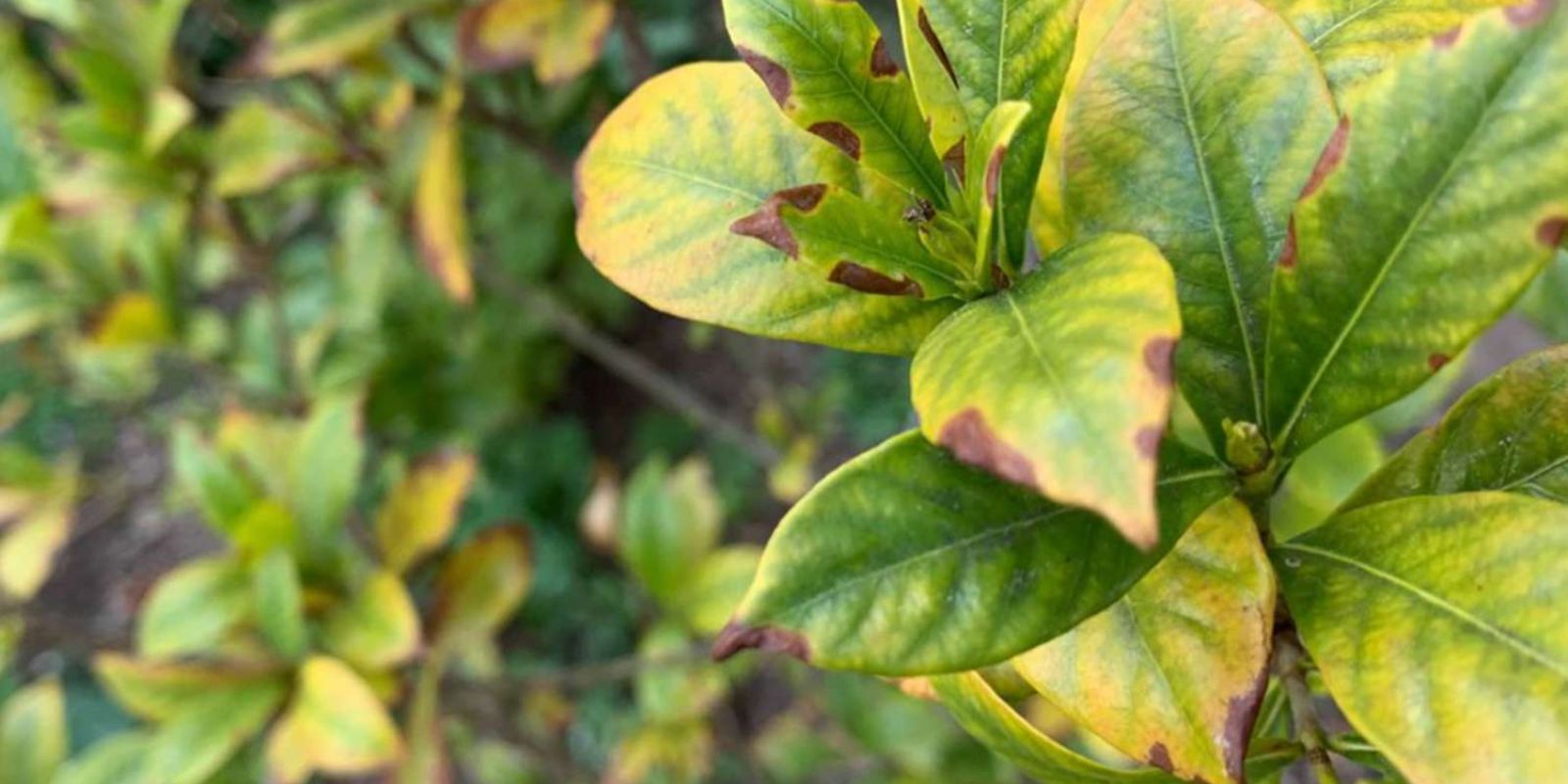Gardenias are well-loved for their beautiful, fragrant flowers and glossy green leaves. However, many gardeners encounter a common issue—yellowing leaves. While this may seem alarming, it’s often a sign of underlying problems that can be corrected with the right care. In this article, we will explore the primary reasons why gardenia leaves turn yellow and provide solutions to restore their vibrant green color.
Common Causes of Yellowing Gardenia Leaves and How to Fix Them
1. Overwatering or Poor Drainage
Signs: Leaves turn yellow from the bottom up, feel soft, and may drop prematurely.
Solution:
- Water only when the top inch of soil feels dry.
- Use well-draining soil with organic matter like peat moss.
- Ensure the pot or garden bed has proper drainage to prevent root rot.
2. Underwatering
Signs: Leaves yellow and curl up due to dryness.
Solution:
- Water consistently, keeping the soil evenly moist but not soggy.
- Mulch around the plant to retain moisture.
3. Nutrient Deficiencies
Gardenias are heavy feeders, requiring proper nutrients to maintain their lush foliage.
- Nitrogen Deficiency
- Signs: Older leaves turn yellow while new growth remains green.
- Solution: Apply a balanced fertilizer with nitrogen, such as a 10-10-10 mix.
- Iron Deficiency (Chlorosis)
- Signs: Yellowing between veins while veins stay green.
- Solution: Apply chelated iron or an iron-rich fertilizer.
- Magnesium Deficiency
- Signs: Yellowing around edges with a green center.
- Solution: Add Epsom salt (magnesium sulfate) to the soil.
4. Incorrect Soil pH
Signs: Leaves turn yellow despite proper watering and fertilizing.
Solution:
- Gardenias thrive in acidic soil with a pH of 5.0-6.0.
- Test soil pH using a test kit.
- Lower pH by adding sulfur or acidic organic matter (pine needles, coffee grounds).
5. Temperature Stress
Signs: Yellowing occurs after sudden cold snaps or excessive heat.
Solution:
- Protect gardenias from extreme temperatures by placing them in a sheltered location.
- Keep them in temperatures between 60-75°F (15-24°C).
6. Excessive Sun or Lack of Light
Signs: Leaves turn yellow and appear scorched or pale.
Solution:
- Provide partial shade; gardenias prefer morning sun and afternoon shade.
- Avoid placing them in direct harsh sunlight for extended periods.
7. Pests and Diseases
- Aphids & Spider Mites: Suck sap, causing yellowing and leaf curling.
- Whiteflies & Mealybugs: Leave sticky honeydew, leading to mold and yellowing.
- Root Rot & Fungal Infections: Cause leaf yellowing and plant decline.
Solution:
- Inspect leaves regularly.
- Use insecticidal soap or neem oil for pest control.
- Avoid overwatering to prevent fungal issues.
Preventive Tips for Healthy Gardenia Leaves
- Maintain Consistent Watering – Keep soil evenly moist but not waterlogged.
- Fertilize Regularly – Use an acid-loving plant fertilizer.
- Prune When Needed – Remove dead or weak branches to promote airflow.
- Monitor pH Levels – Keep soil within the optimal acidic range.
- Check for Pests – Regularly inspect and treat issues early.
Conclusion
Yellowing gardenia leaves are a signal that something in their environment needs adjustment. By identifying and addressing the root cause—whether it’s watering habits, soil pH, nutrient deficiencies, or pests—you can restore your gardenia’s health and keep its foliage lush and green. With the right care, your gardenia will continue to thrive, producing beautiful blooms for seasons to come.
💬 Have you struggled with yellowing gardenia leaves? Share your experience and solutions in the comments below! 🌿✨
#GardeniaCare #YellowLeaves #GardeningTips #GreenThumb #PlantLovers #HomeGarden #GardeningHacks

